Stone fruit farm level planning and decision making: BAR Region
Key Summary Statistics for 2022 base year

Model Indices
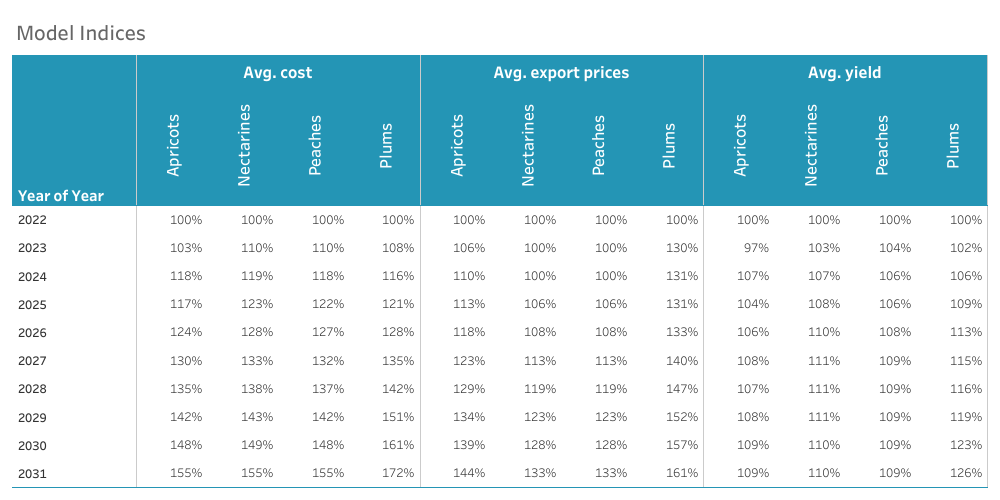
Market split and yield
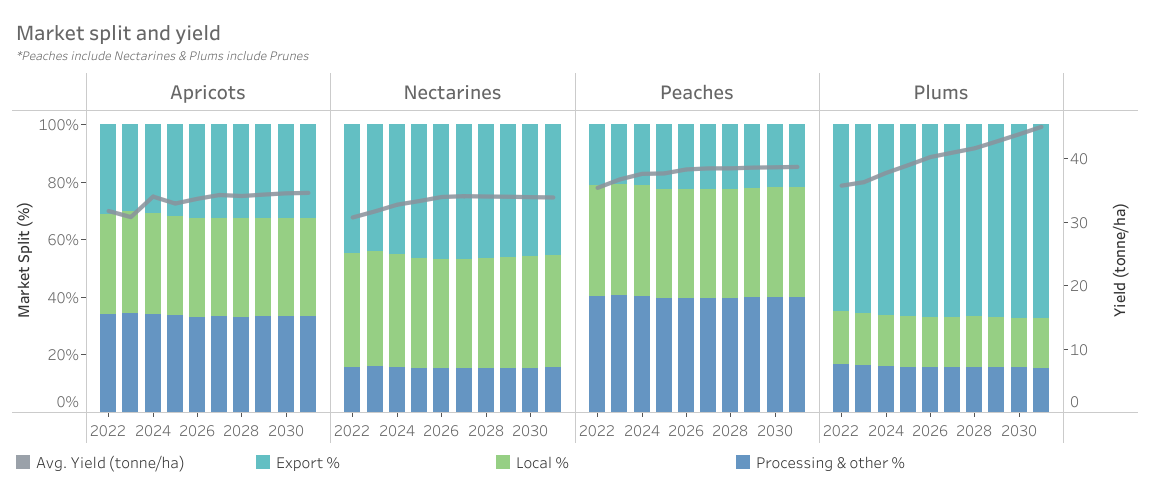
A consistent yield improvement over the outlook period is projected, barring weather related fluctuations. On farm-level, the share of the harvest going to the export market outlet is expected to remain largely the same, with some increase observed for plums over the outlook period. This still represents a constant improvement of quality for all stone fruit types, given that the increases in yields are expected to also be of export quality, albeit that the share of total exports still remain largely the same.
Production cost for 2022 base year
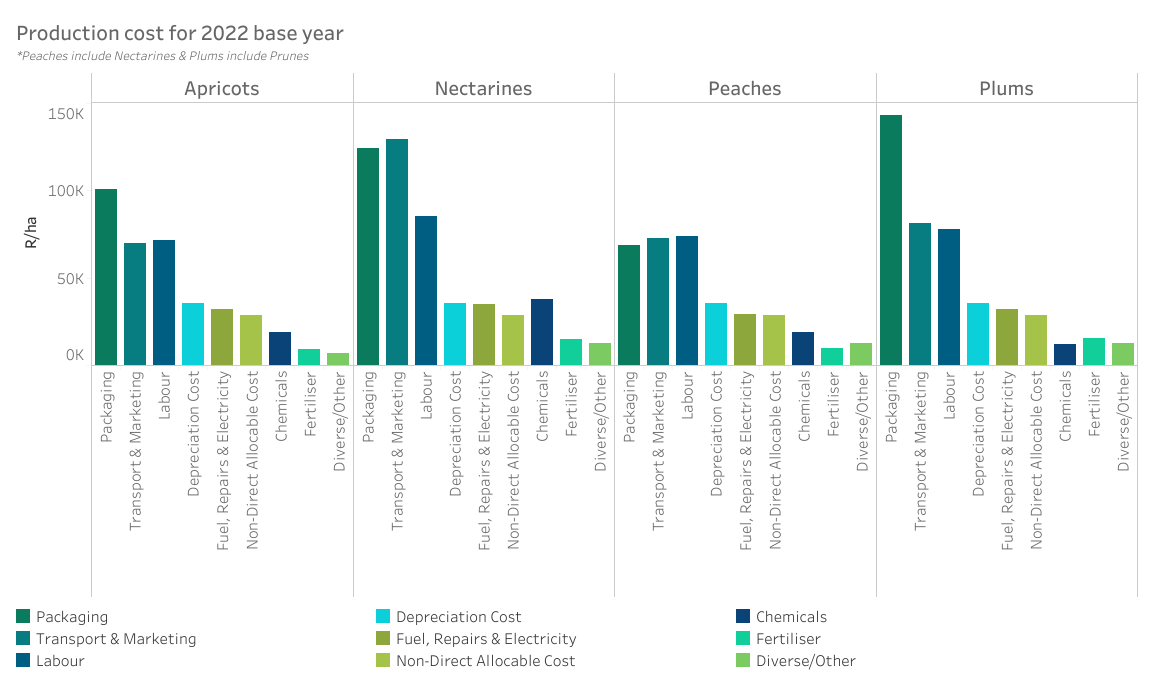
The annual cost of production of one hectare of the respective stone fruit types in this specific region is given here and is broken down to its direct and non-direct allocable cost components. The production costs given here associated with the yield input of the models. Packing-, pack material- and marketing costs are calculated as a cost per carton multiplied with the associated component of the yield that is packed as fresh produce in cartons. These costs per carton thus include pack house, cooling, transport and marketing costs.
Production cost per ha (detailed)

Income
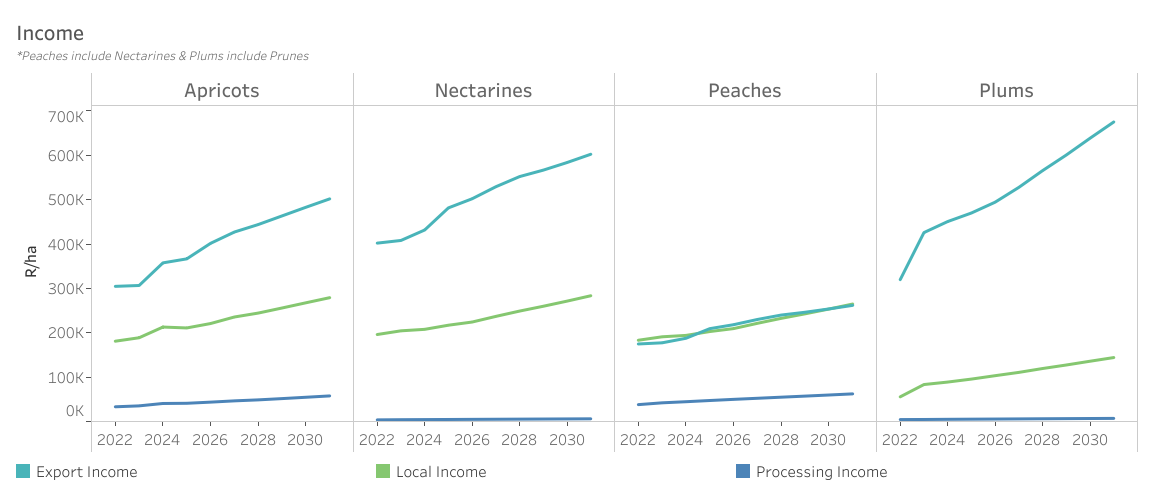
Nominal price increases projected for the industry average output prices across all market outlets (Rand/tonne), along with average yield increases over the long term, translate to increased income per hectare on farm-level. If the projections are considered for a full-bearing production unit, the higher yields then lead to higher revenue per hectare than if replacement of older orchards is done on farm-level (if assumed that the older orchards left in the ground does not deteriorate in terms of yield and marketability of the specific cultivar). Macro-economic factors such as the challenges experienced in overseas markets with regards to consumer buying power and freight cost increases, that are still higher than historic levels (pre-pandemic), are expected to put some pressure on output prices and thus farm-level revenue for the medium term (i.e., revenue per hectare will probably not be what it could have been if these factors were not present). However, the positive effects on output prices such as the weakening of the rand and improved marketing opportunities are expected to lead to improved revenue per hectare over the long term. Revenue for exports were calculated on a FOB level, and thus FOB costs are included when calculating profitability, while the revenue of domestic outlets (for fresh and processing) are calculated as the revenue received when selling to the local market (with the appropriate costs subtracted from there for profitability calculations). For farm-level revenue calculations, the regional differences were also considered in terms of yield and potential output prices. These differences originate predominantly from differences in climate, cultivars and timing in the market.
High-level Income Statement
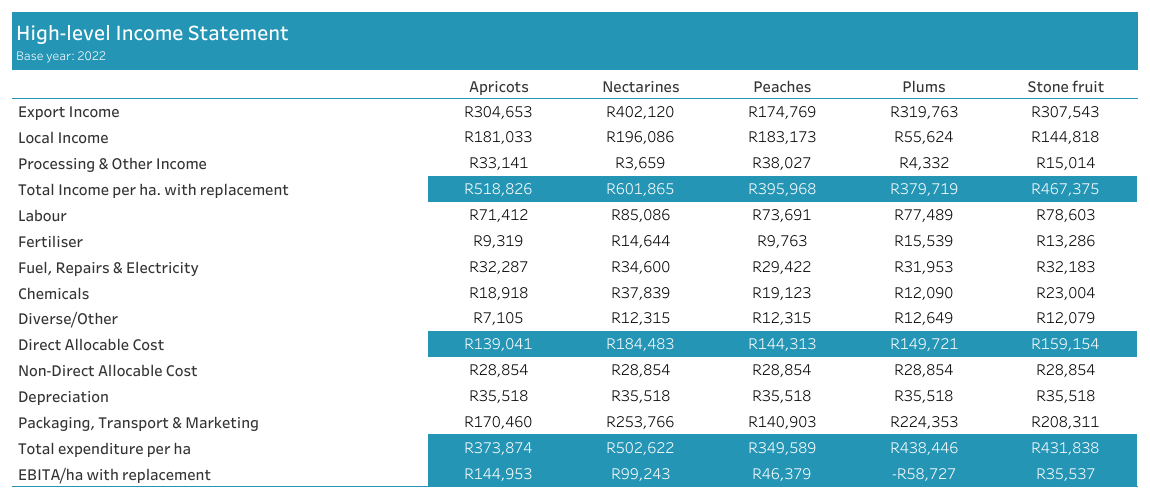
Median EBITA R/ha for Stone fruit

Given the cost and output assumptions of the deterministic model, certain key output variables (KOVs) are made stochastic by including randomness in the outlook of these variables, within a certain band typified by their historic values. With these stochastic variables, simulations are run of each farm model to give a 500-iteration range of probable profitability outcomes. These values correspond to the figure below and provides and a projection for the medians of the bottom third, middle- and top third of all outcomes. Congruent with the probability of negative returns projected in the figure below, the median bottom third remains negative, and fairly consistent, throughout the outlook period. In comparison, an improvement in the middle third and top third median is projected, which is indicative of an improvement in the overall risk profile over the outlook period. This is, in our view, congruent with the changes observed in the field where producers actively work towards reducing the impact of adverse conditions on production. The increase in probability of negative returns in 2024 (the 2023/24 season) are as a result of an accumulation of various factors on the cost and marketing side reaching boiling point.
EBITA/ha risk profile for Stone fruit
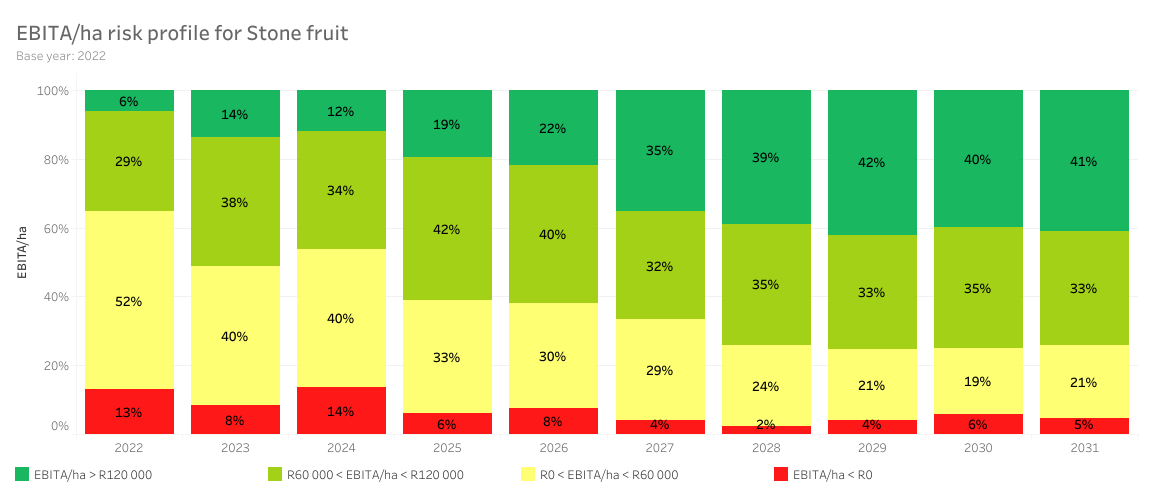
The simulated data of the stochastic models are further represented as a risk profile for the prototype, industry representative, farm model in the region. The probabilities of achieving different levels of profitability are therefore given according to the legend given in the figure. The probability of negative returns in the base year is high, but current indications are that this situation will improve over time.
Key Summary Statistics for 2022 base year

Model Indices
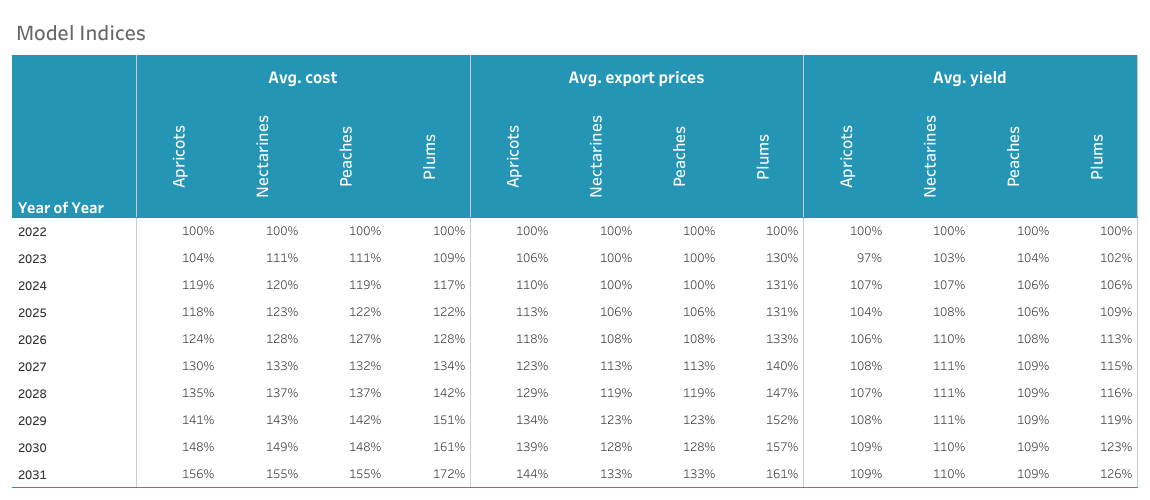
Market split and yield
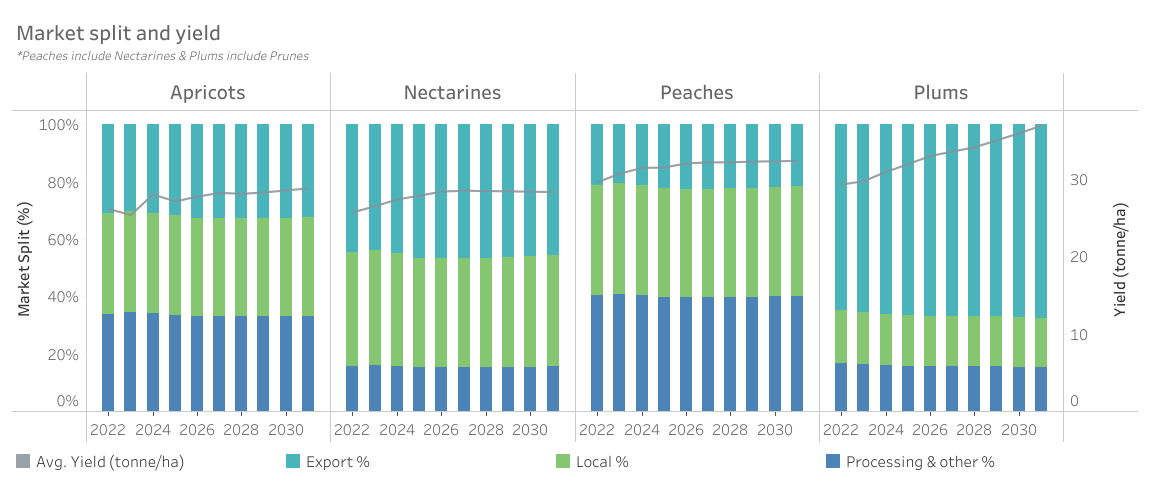
A consistent yield improvement over the outlook period is projected, barring weather related fluctuations. On farm-level, the share of the harvest going to the export market outlet is expected to remain largely the same, with some increase observed for plums over the outlook period. This still represents a constant improvement of quality for all stone fruit types, given that the increases in yields are expected to also be of export quality, albeit that the share of total exports still remain largely the same.
Establishment cost for 2022 base year
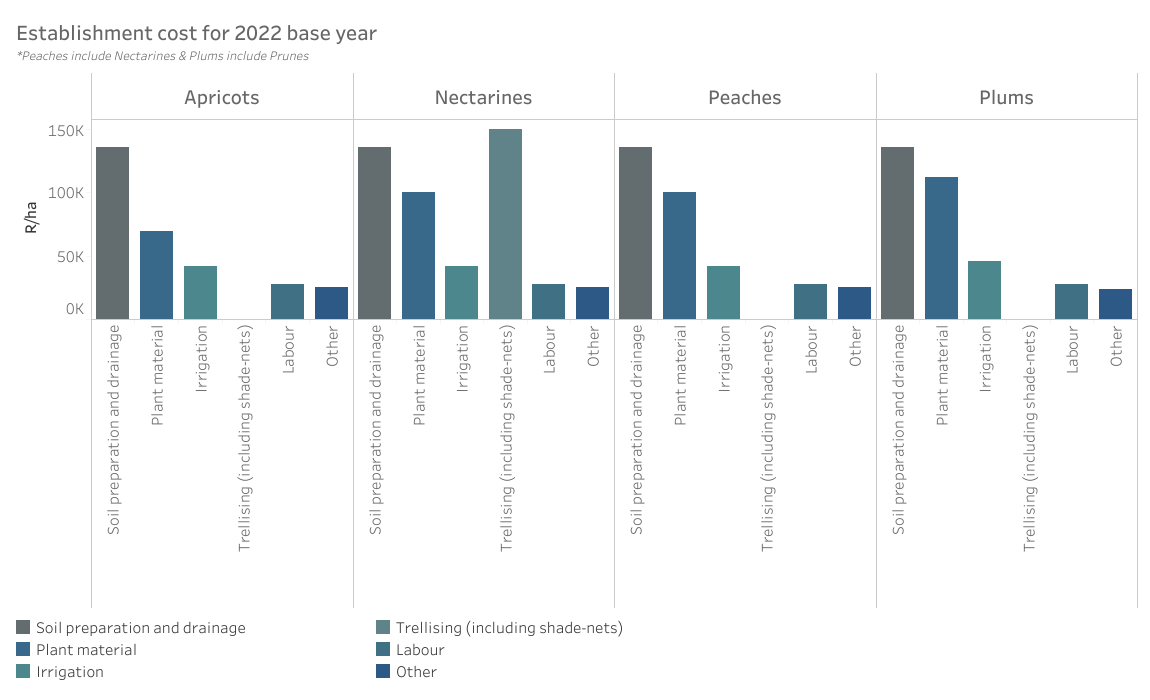
The cost of establishing one hectare of stone fruit in this specific region is given here and is broken down to its direct allocable cost components. Shade-netting is included only on nectarine orchards, for all regions except KK and SFS, at a cost of three hundred thousand rand per hectare, on fifty percent of nectarine orchards.
Establishment cost per ha (detailed)
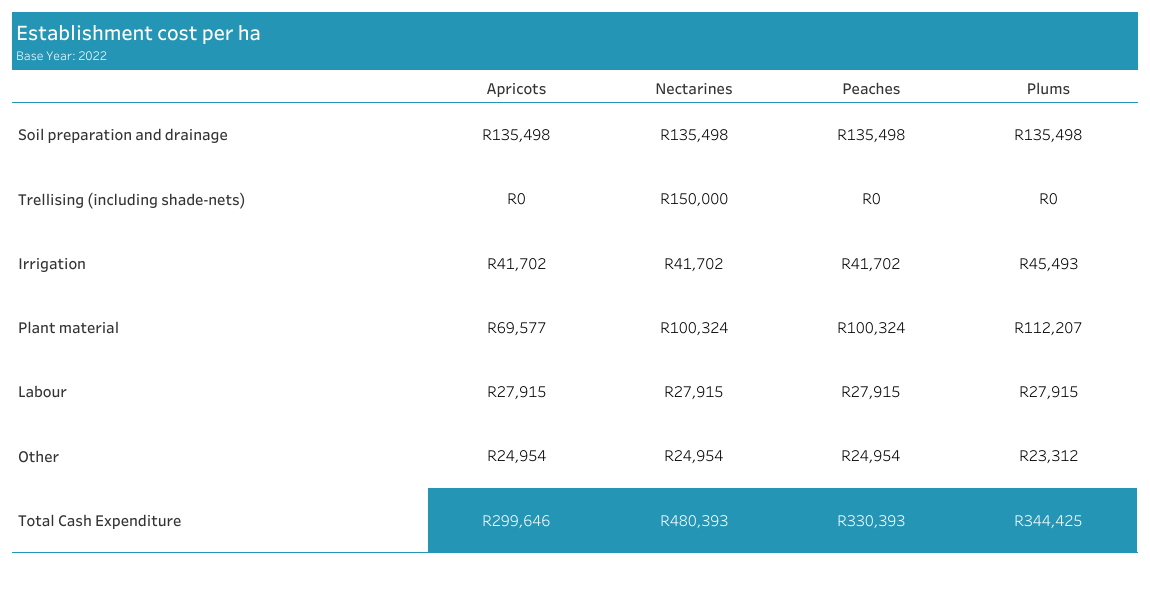
Production cost for 2022 base year

The annual cost of production of one hectare of the respective stone fruit types in this specific region is given here and is broken down to its direct and non-direct allocable cost components. The production costs given here associated with the yield input of the models. Packing-, pack material- and marketing costs are calculated as a cost per carton multiplied with the associated component of the yield that is packed as fresh produce in cartons. These costs per carton thus include pack house, cooling, transport and marketing costs.
Production cost per ha (detailed)

Income
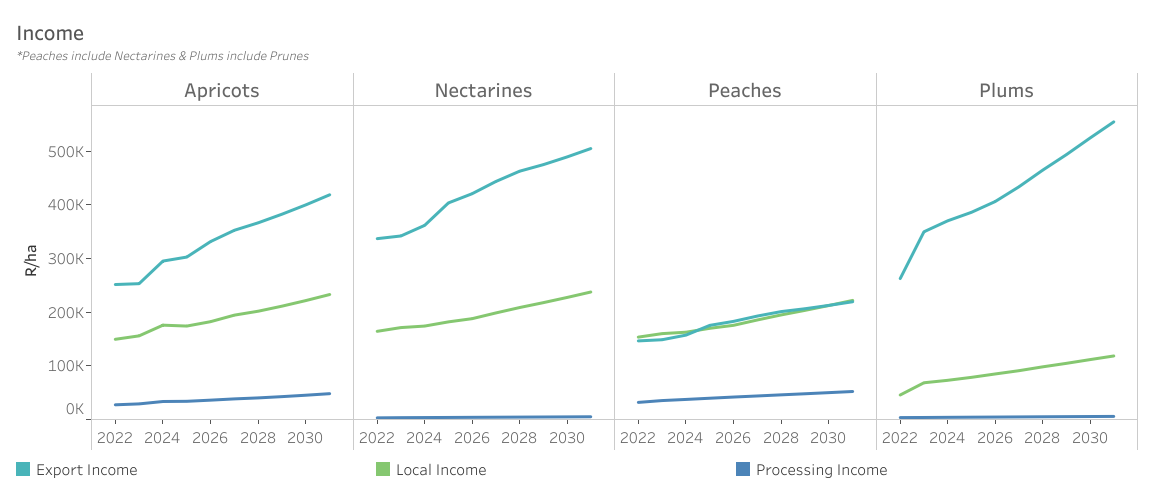
Nominal price increases projected for the industry average output prices across all market outlets (Rand/tonne), along with average yield increases over the long term, translate to increased income per hectare on farm-level. If the projections are considered for a full-bearing production unit, the higher yields then lead to higher revenue per hectare than if replacement of older orchards is done on farm-level (if assumed that the older orchards left in the ground does not deteriorate in terms of yield and marketability of the specific cultivar). Macro-economic factors such as the challenges experienced in overseas markets with regards to consumer buying power and freight cost increases, that are still higher than historic levels (pre-pandemic), are expected to put some pressure on output prices and thus farm-level revenue for the medium term (i.e., revenue per hectare will probably not be what it could have been if these factors were not present). However, the positive effects on output prices such as the weakening of the rand and improved marketing opportunities are expected to lead to improved revenue per hectare over the long term. Revenue for exports were calculated on a FOB level, and thus FOB costs are included when calculating profitability, while the revenue of domestic outlets (for fresh and processing) are calculated as the revenue received when selling to the local market (with the appropriate costs subtracted from there for profitability calculations). For farm-level revenue calculations, the regional differences were also considered in terms of yield and potential output prices. These differences originate predominantly from differences in climate, cultivars and timing in the market.
High-level Income Statement
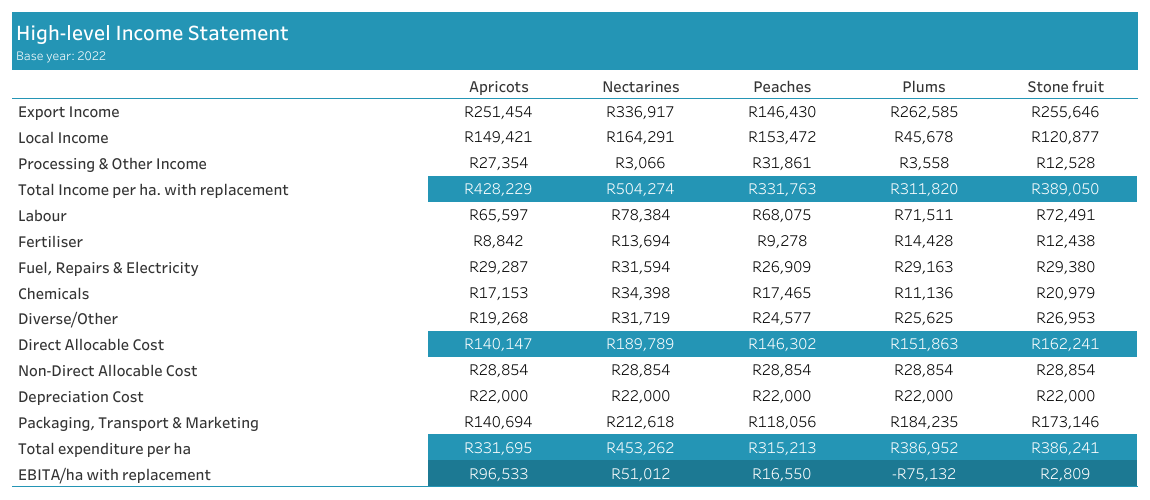
Median EBITA R/ha for Stone fruit

Given the cost and output assumptions of the deterministic model, certain key output variables (KOVs) are made stochastic by including randomness in the outlook of these variables, within a certain band typified by their historic values. With these stochastic variables, simulations are run of each farm model to give a 500-iteration range of probable profitability outcomes. These values correspond to the figure below and provides and a projection for the medians of the bottom third, middle- and top third of all outcomes. Congruent with the probability of negative returns projected in the figure below, the median bottom third remains negative, and fairly consistent, throughout the outlook period. In comparison, an improvement in the middle third and top third median is projected, which is indicative of an improvement in the overall risk profile over the outlook period. This is, in our view, congruent with the changes observed in the field where producers actively work towards reducing the impact of adverse conditions on production. The increase in probability of negative returns in 2024 (the 2023/24 season) are as a result of an accumulation of various factors on the cost and marketing side reaching boiling point.
EBITA/ha risk profile for Stone fruit
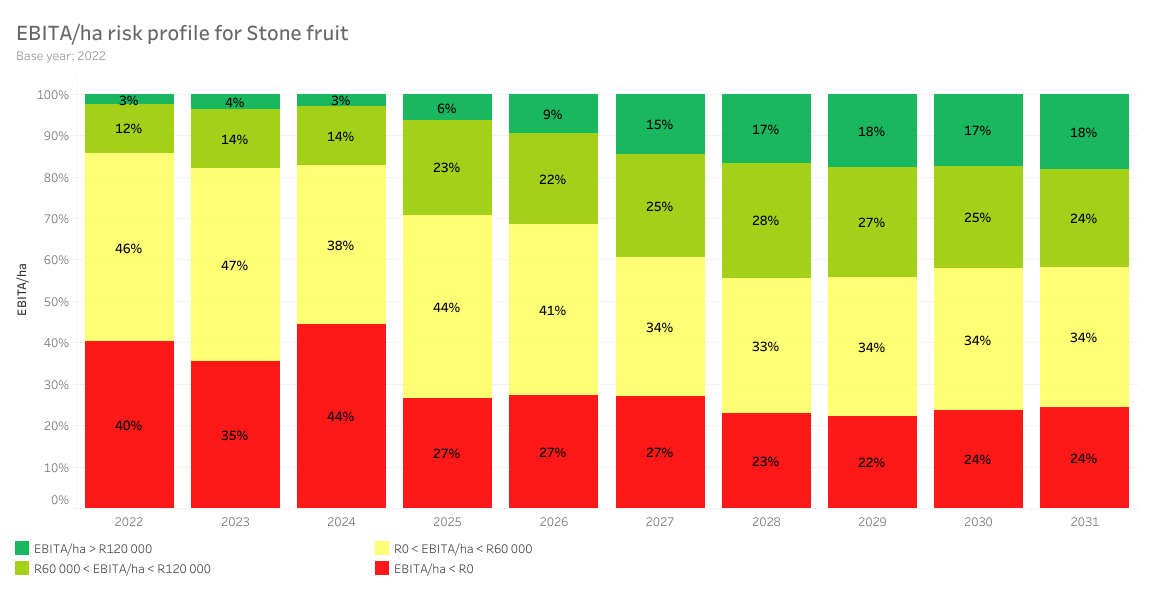
The simulated data of the stochastic models are further represented as a risk profile for the prototype, industry representative, farm model in the region. The probabilities of achieving different levels of profitability are therefore given according to the legend given in the figure. The probability of negative returns in the base year is high, but current indications are that this situation will improve over time.